Getting Started with a Dog Training Business
If you love animals and have a knack for understanding their behavior, starting a dog training business might be the perfect venture for you. Not only can it be a rewarding experience, but it can also be a lucrative opportunity in the pet industry. So, if you’re wondering how to start a dog treat business or how to open a pet store, consider adding dog training to your list of potential ventures.
While certifications can certainly enhance your credibility, nothing beats hands-on experience in this field. Before diving in, it’s important to develop a solid business plan. This plan should include creating a checklist for starting your business and conducting thorough research on common business structures.
Remember, the location and services you offer can have a significant impact on your business operations and potential profitability. Choose your training location wisely and carefully consider the range of services you’ll provide.
I want to talk to you about dog ownership in the US. It’s always been popular, but in recent years, it’s been on the rise. And with more people having dogs, the need for trainers has also increased. That’s where the question of how to start a dog training business comes in. But hold on, there’s more! If you’re interested in other dog-related ventures, like breeding or pet photography, I’ve got some cool stuff to share with you too.
Contents
- 1 The Awesome World of Dog Training
- 2 What I Need to Become a Dog Trainer
- 3 Discovering the Right Audience for Your Dog Training Business
- 4 Getting Started with Your Own Dog Training Business: Step-by-Step
- 4.1 Creating Your Dog Training Business Plan
- 4.2 Types of Services I Offer
- 4.3 Financial Projections
- 4.4 Setting Up Your Dog Training School
- 4.5 Getting Insurance for Your Dog Training Business
- 4.6 Creating a Website for Your Dog Training Business
- 4.7 Unleashing the Power of Marketing and Branding for Your Dog Training Business
- 4.8 Showcasing Your Pawesome Dog Training Services and Determining the Best Pricing
- 4.9 Creating Connections with Dog Owners and Other Pet Professionals
- 5 Overcoming Challenges and Embracing Growth in the Dog Training Industry
- 6 FAQs: Starting Your Own Dog Training Business
The Awesome World of Dog Training
Let’s take a trip back in time. You see, dogs have been bred for different purposes for centuries. In the past, people didn’t let their dogs live inside their homes. Can you believe it? But things have changed!
Nowadays, dogs are like members of the family. They live inside our houses, and we love sharing our lives with them. Isn’t that amazing?
But let me tell you, a lot of dogs miss out on the good stuff simply because they don’t get trained. And it’s not just about tricks and obedience, it’s about their mental well-being and their desire for human connection. That’s where the opportunity lies for people like you and me who want to start a pet business.
You know what? Training a dog isn’t just about teaching the pup. It’s also about teaching the owner. The best dog trainers know this and they tailor their training to fit the needs of both humans and pups, taking into account different learning speeds and environments.
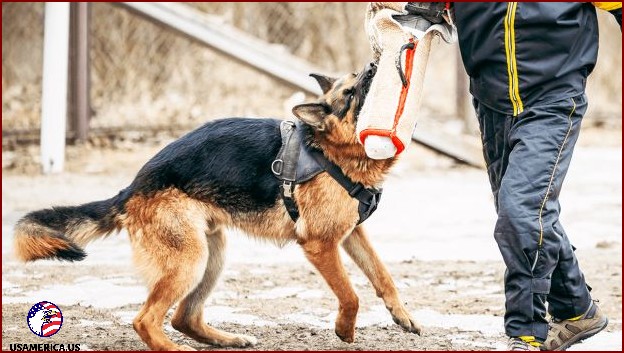
What I Need to Become a Dog Trainer
To become a dog trainer, I need to have some important qualifications and skills. It’s not just about loving dogs; I need to have experience working with them and a deep understanding of their behavior. Patience is key, as well as having good interpersonal skills to work with both dogs and their owners. Having a background in animal behavior or veterinary sciences can also be really helpful.
Getting the Right Certification
While I don’t necessarily have to be certified to start my own dog training business, having a certification can make a big difference. It shows that I’m serious about what I do and can enhance my credibility. There are organizations like the International Association of Canine Professionals (IACP) and the Certification Council for Professional Dog Trainers (CCPDT) that offer certification programs.
Improving My Training Techniques
If I want to specialize in a particular type of dog training, there are plenty of opportunities for me to learn and expand my knowledge. I can attend seminars and other events that focus on different training techniques. This will help me become a better trainer and give me more tools to work with.
Let me give you an example. If you’re interested in teaching dogs to be obedient, you could go to a dog show happening nearby and check out the obedience competitions that are held along with it. You’ll get to see some amazing dogs in action and meet the trainers behind them. Finding a mentor or joining a training class is an excellent way to begin and enhance your skills.

Getting Inside the Mind of Dogs: Understanding Their Behavior and Psychology
Are you a dog owner like me? Well, many of us turn to trainers to help our furry friends learn some important skills, like obeying commands, walking politely on a leash, and not going crazy when we have guests over.
But, you know what? Some dogs have a bit of a complicated past. They might come from animal shelters or rescues, and we might not know much about their history. That’s where a great trainer, who really understands doggy body language and behavior, can step in and create a personalized training plan just for you and your pup. How cool is that?

Discovering the Right Audience for Your Dog Training Business
Let’s talk about finding the perfect people for your dog training business. You know, those folks who are eager to learn and unleash their furry friends’ potential. We all want well-behaved dogs who can be part of the family and share in our everyday adventures, right?
Most dog trainers offer a general obedience program called Life Skills or something similar. It’s like a toolkit that helps both you and your dog navigate through daily life with ease. When your furry friend displays proper behavior, it makes them a joy to be around!
Now, here’s something interesting. Many trainers also have a specific area they specialize in – their own little niche. Let me give you a couple of examples:
Puppy Training
Here’s a bit of a sad fact: most dogs end up in animal shelters when they’re between 6 and 9 months old. It’s not because they’re bad dogs, but because raising a puppy can be tough! There’s so much to teach them, like where to do their business, how to socialize, and even the basics of listening to commands. Early training is super important because it sets the groundwork for good behavior as they grow.
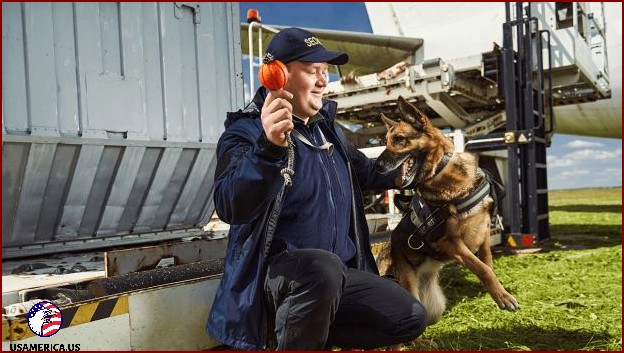
Dog Sports: Unleashing the Fun!
Did you know that dogs of all shapes and sizes can get in on the action and participate in awesome dog sports? It’s true! There are so many exciting competitions and activities for our furry friends to enjoy.
One popular dog sport is obedience competitions. It’s all about showing off how well-trained your pup is. They have to follow commands like sit, stay, and come. It’s like a dance routine, but with a wagging tail!
Another thrilling sport is agility. Picture this – your dog jumping through hoops, running through tunnels, and weaving between poles. It’s like a canine obstacle course, and it’s a blast!
But wait, there’s more! We’ve got flyball, where dogs race against each other, jumping over hurdles to retrieve a ball. And let’s not forget about dock diving, where brave dogs launch themselves into the water from a dock. Talk about making a big splash!
Believe it or not, there are even competitions called Earth Dog and Barn Dog. In Earth Dog, dogs show off their sniffing skills by entering a hole and following a scent. And in Barn Dog, they have to find a hidden rodent in a barn. It’s like a real-life treasure hunt!
But dog sports aren’t just about competition. Dogs can also be trained for other awesome activities. Ever heard of lure chasing? It’s perfect for sight hounds like Salukis and Wolfhounds. They chase a mechanical lure and it’s a thrilling game of chase.
Some dogs can be trained for hunting, where they use their natural instincts and skills to track down prey. And if you’re near the water, your furry friend might enjoy water retrieving. They get to dive in and retrieve items from the water. It’s an aquatic adventure!
Therapy Dogs: Spreading Love and Joy
Did you know that dogs can also provide comfort and happiness to people in need? It’s true! These special dogs are called therapy dogs, and they bring so much joy to hospitals, schools, nursing homes, and more.
Therapy dogs undergo special training to make sure they are calm, gentle, and comfortable in various environments. They learn how to handle different situations and interactions with kindness and love.
A trainer works with these amazing dogs and provides them with certification. This special certification allows them to bring their healing powers to different places where people need a little extra love and support.
Imagine being in a hospital and having a friendly, furry companion by your side, offering cuddles and wagging their tail. Or imagine a therapy dog visiting a school, helping children feel more at ease and providing a listening ear. It’s truly magical!
So, whether it’s competing in dog sports or spreading happiness as a therapy dog, our four-legged friends can do amazing things. They have the power to bring joy, make us laugh, and remind us of the incredible bond between humans and animals. Woof-tastic!
Did you know that a therapy dog and a service dog are different from each other? Yep! They may both be dogs, but they have different purposes. You see, a service dog is trained to do specific tasks for people with disabilities, like helping them open doors or pick up objects. On the other paw, a therapy dog has a job to provide comfort and support to people in places like hospitals, nursing homes, or schools.
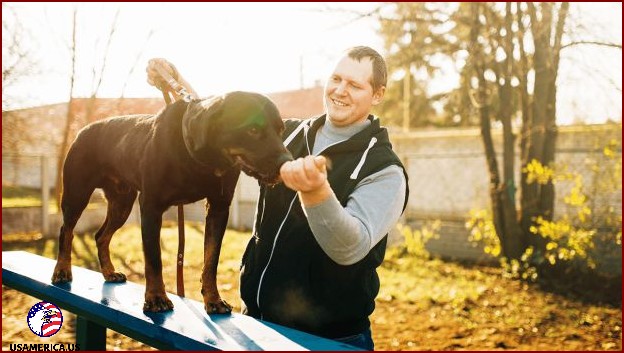
Changing Behavior
When I leave my dog alone, it gets anxious and starts barking and destroying things. It gets so scared and overwhelmed. Thankfully, there’s a way to change this behavior, but it takes time and effort. It’s called behavior modification, and it involves two main techniques: desensitization and counterconditioning. Basically, I have to gradually get my dog used to being alone and teach it that being alone is a positive thing.
If my dog is really struggling, I might need to send it to a professional trainer for a while. They can help with specific strategies and techniques to address its aggression. Dealing with aggression is not something I should try to do on my own. It requires someone with a lot of experience and knowledge.
Going Beyond Basic Training
When it comes to advanced training, I’ve discovered some pretty cool techniques. Instead of using my voice, I can use hand signals to communicate with my furry friend. It’s like we have our secret language! And get this, sometimes we even do training off-leash. I can’t believe how far we’ve come! We tackle challenging tasks like long retrieves and learn some pretty fancy tricks. But that’s not all. We also take on agility courses that have tunnels and jumps. It’s like a mini obstacle course just for us! I can’t wait to see what other amazing things we’ll learn together.
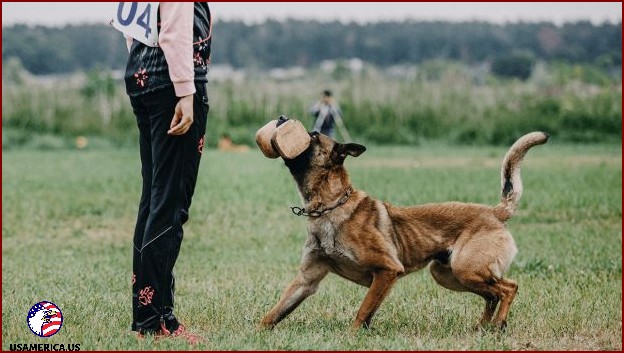
Experts in Professional Dog Training
When it comes to training dogs, there are specialists who focus on specific breeds or behavior issues. They have a deep understanding of the unique traits and needs of different dogs, making them the go-to experts for training.
For example, some trainers specialize in working with herding dogs, hunting dogs, or breeds known for their protective and law enforcement skills. They know how to tailor their training methods to address the specific behaviors and instincts of these breeds.
But that’s not all! Trainers can also teach dogs for important tasks like narcotics work or search-and-rescue missions. These dogs undergo rigorous training to develop their specialized skills and contribute to important operations.
Additionally, dogs can be trained to assist people with physical or mental challenges. These amazing dogs offer support and companionship, helping individuals lead more independent and fulfilling lives.
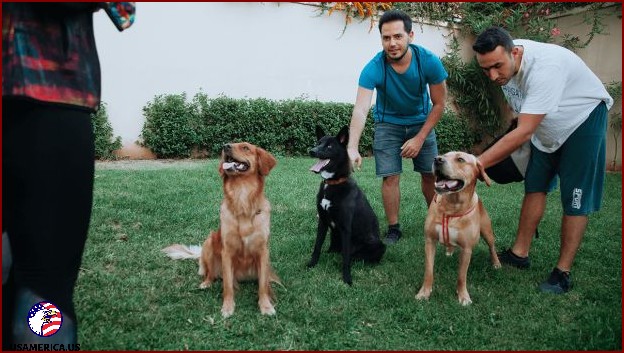
Getting Started with Your Own Dog Training Business: Step-by-Step
No matter what kind of dog training you want to offer, there are some important things you need to do to start your business:
Creating Your Dog Training Business Plan
- Summing it Up: Give a quick overview of your business, including your mission and goals.
- About Your Business: Provide details about your dog training service, such as where it will be located and how it will operate.
- Looking at the Market: Do some research on the local pet market, check out your competition, and identify your target audience.
- Marketing and Sales Strategy: Figure out how you’ll attract and keep clients interested in your services.
- Setting Up Your Organization: Decide on a business structure (like being the sole owner or forming an LLC), as well as who will have different roles and responsibilities in your business.
Types of Services I Offer
- Service Offerings: I provide a range of services for dogs, including overnight stays and daily visits.
Financial Projections
- Financial Projections: I have estimated the revenue, costs, and profitability of my dog training school.
Setting Up Your Dog Training School
- Setting Up in a Dedicated Building:
- Pros: If I choose to set up in a dedicated building, I have control over the environment and can maintain a consistent setup. This also allows for the potential to have multiple classes or sessions running simultaneously. Additionally, other trainers may rent time or space at my dog training school.
- Cons: However, there are some drawbacks to setting up in a dedicated building, such as high overhead costs for rent and utilities. It also requires a long-term commitment to a specific location.

Getting Insurance for Your Dog Training Business
- Having liability insurance is really important to protect you from any claims if a dog bites someone or gets injured during training.
- You should also consider getting care, custody, and control insurance to cover any injuries that occur to the dog while training.
Creating a Website for Your Dog Training Business
When starting a business, it’s crucial to establish a strong online presence. You can follow a guide to help you set up a website that effectively showcases your services.
As your business grows, make sure to include plenty of pictures and client testimonials on your website. And don’t forget to include your contact information so potential clients can easily reach out to you.
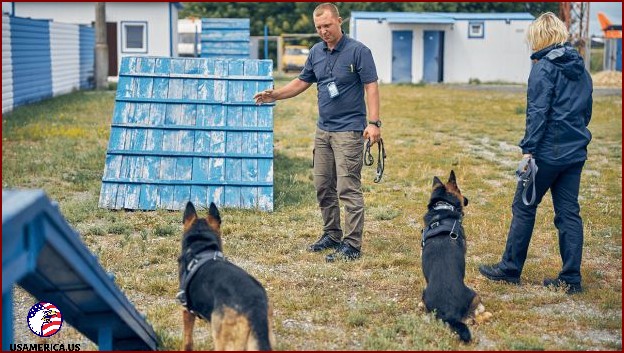
Marketing and Branding for a Successful Dog Training Business
Unleashing the Power of Marketing and Branding for Your Dog Training Business
Let’s dig into the world of marketing and understand its significance. The key to spreading the word about your dog training business is through happy customers who recommend you to others. It’s like a secret code passed on from one satisfied pet owner to another. I recommend connecting with other pet professionals, like those who are exploring the ins and outs of starting a dog boarding business. This way, you can expand your network and learn from each other.
Want to boost your visibility even more? Join local organizations such as the Chamber of Commerce. This will put you in touch with fellow business owners and provide opportunities to promote your services. Remember, word-of-mouth is the golden ticket to success in this industry, and you can sweeten the deal for your loyal customers. Offer them a discount on training sessions if they refer new clients to you. It’s a win-win for everyone involved!
Showcasing Your Pawesome Dog Training Services and Determining the Best Pricing
Figuring out how much to charge for your top-notch dog training services is a decision worth considering. The fees you set may vary depending on the type of training you provide. Let me give you a couple of examples. You could organize an obedience class and invite five eager participants, with each of them paying $20 for an hour of quality training. On the other hand, you might offer personalized private lessons right at your client’s house. In this case, you could charge $50 for an hour of one-on-one training. It all depends on your expertise and the value you bring to the table.
- Per Session: When you attend a group session with a dog trainer, it can cost you anywhere from $30 to over $100. If you prefer a private session, be prepared to pay between $50 and $150 or more.
- By the Hour: If you choose to pay by the hour, the rates can range from $50 to over $150.
Some trainers offer a special program called board and train. This means that your dog will stay with the trainer for a concentrated period of training. The cost of these programs can vary depending on the trainer’s expertise and the intensity of the program. You can expect to pay anywhere from $500 to over $2,500 per week.

Creating Connections with Dog Owners and Other Pet Professionals
When it comes to building a network, connecting with businesses related to pets is essential. This includes pet stores, feed stores, dog groomers, and veterinarians. However, keep in mind that dog owners are everywhere! They can be the person standing behind you in line at the grocery store or the parents you chat with during your child’s soccer game.
As a dog owner yourself, you and your well-trained four-legged companion are the best advertisement for your business. Consider wearing clothing with your business logo and always have business cards on hand.
Overcoming Challenges and Embracing Growth in the Dog Training Industry
The dog training industry has tremendous potential for growth. It is a field that has not yet been fully explored, with a high demand for trainers. While specialized training for search-and-rescue or therapy dogs is important, there is an even greater need for general obedience training.
Now, let me tell you about one of the toughest things when it comes to training dogs – the training won’t really work unless you keep following the rules. That’s where the dog trainer can help. They can offer special classes for those who have already completed the training to help them brush up their skills and meet this challenge.
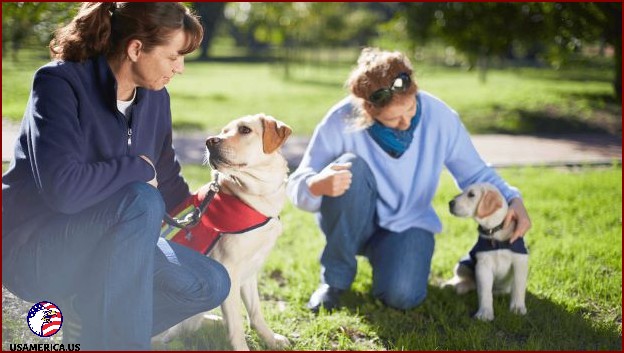
FAQs: Starting Your Own Dog Training Business
How much does it cost to start a dog training business?
So, you’re thinking about starting your very own dog training business? Well, before you dive in, there are a few things you need to consider, including the cost. The amount of money you’ll need to get started can vary quite a bit. It all depends on your level of experience and how you plan to run your business.
If you decide to conduct training on your own property, you won’t need to worry about leasing any space. This can save you some cash. On the other hand, if you choose to lease an area for training or even offer in-home training sessions, you’ll have some additional costs to factor in.
How profitable are dog training businesses?
Now, let’s talk about the potential profitability of a dog training business. If you own your own facility, there’s actually a way to make some extra money! You can lease out space to other trainers.
For instance, let’s say you specialize in obedience training but you know someone who’s really great at helping clients prep their dogs for dog shows. That trainer could lease space from you and pay you for using your building. They might charge their clients around $20 for a one-hour session, and then you would get a cut of that payment as the building owner.
When you’re starting out as a dog trainer, it’s crucial to spend some time, around an hour or two, getting to know the dog owners and their furry companions. During this initial meeting, I would ask the clients about their goals for their dogs. Through a collaborative discussion, we would work out ways to achieve those goals together.
How much can a professional dog trainer earn?
A professional dog trainer typically charges between $30 and $100 per hour for a group training session. For a private lesson, the price ranges from $50 to $150 per hour.
The actual amount a trainer can make depends on how many training sessions they have scheduled in a day.
Do certain dog breeds require specialized training methods?
Every breed has dogs with different temperaments and backgrounds. Dogs can come from well-bred parents or from less responsible breeding practices. Some dogs may even come from rescue situations where we have no information about their genetic makeup. In other words, every dog comes with a unique foundation for training.
